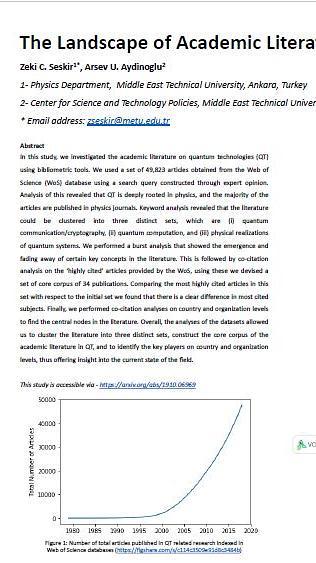Would you like to see your presentation here, made available to a global audience of researchers?
Add your own presentation or have us affordably record your next conference.
keywords:
and scientometrics
informatics
open and public access
funding/sponsorship
bibliometrics
Objective This study investigated the relationship between
government funding and scholarly journal publishing,
specifically concerning small and mid-sized journal
publishers in European countries. This study was conducted
against the changing backdrop of the global scholarly journal
landscape in which an increasing share of journals are free for
both authors and readers, which raises the need for journals
to seek resources other than subscription-based income.1,2
Design To achieve this objective, the study included 2
components: (1) establish the volume and key bibliometric
characteristics of small and mid-sized journal publishers (an
organization or actor publishing ≤150 peer-reviewed
journals) present in European countries and (2) collect
information about country-level public funding mechanisms
for scholarly journals active in the 51 sovereign states in
Europe, including transcontinental states partly in Europe,3
as well as Kazakhstan and Kosovo. The Ulrichsweb
publications database was used for the bibliometric
component of the study. For funding information, manual
data collection was required to gather as much information as
possible, which included explorative web searches and
consultations with scholarly publishing experts in the
countries of interest.
Results The study identified 16,387 journals from small and
mid-sized publishers being published in European countries,
of which 36% were already publishing open access, ie, free for
anyone to read on the web. Table 40 presents a geographic
breakdown of the journal counts and open access status per
publisher size category. The majority of journals published in
Europe were published by single-journal publishers (77% of
all publishers), ie, by actors or organizations that only output
1 journal. Journals from small and mid-sized publishers were
found to be multilingual or non-English to a higher degree
than larger publishers that publish in excess of 150 journals
each (44% and 43% vs 6% and 5%, respectively). Substantial
diversity was observed in how (and whether) countries
reserve and distribute funds to journals active in those
countries, ranging from continuous inclusive subsidies to
competitive grant funding to nothing at all. Information
about funding instruments was overall hard to locate and
often only available in national languages.

Conclusions Overall, the study suggests that the European
journal publishing and funding space for small and mid-sized
publishers is very diverse when it comes to whether and how
economic and technical support from government resources
is offered. Many countries have recently set up journal portals
for hosting open access journals published in these countries,
and funding instruments often require funded journals to
enable open access for their content. Funding information
was often difficult to discover, and efforts to make such
information more easily available would likely facilitate policy
development in this area.
References
1. Bosman J, Frantsvåg JE, Kramer B, Langlais P-C,
Proudman V. OA diamond journals study, part 1: findings.
Zenodo. Published online March 9, 2021. doi10.5281/
zenodo.4558704
2. Crawford W. Gold Open Access 2016-2021: Articles in
Journals (GOA7). Cites & Insights Books; 2022.
3. EUR-Lex. Browse by EuroVoc. 2021. Accessed June 9,
2022. https://eur-lex.europa.eu/browse/eurovoc.html?params=72#arrow_7206
Conflict of Interest Disclosures Mikael Laakso is the chair of
the Finnish Association for Scholarly Publishing.
Funding/Support This research was funded by the Finnish
Association for Scholarly Publishing.
Role of the Funder/Sponsor The funder had no influence on the
execution of the study.
Acknowledgment The authors wish to express their gratitude to
the journal editors who took the time to respond to our survey, and
to the OpenAIRE contact persons for giving helpful information on
the public funding circumstances in many of the included countries.


